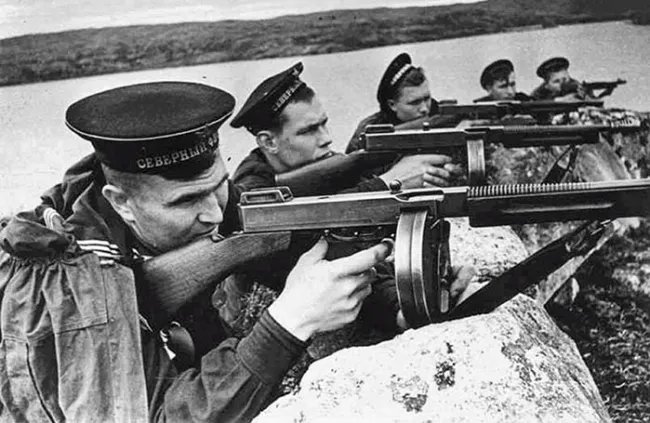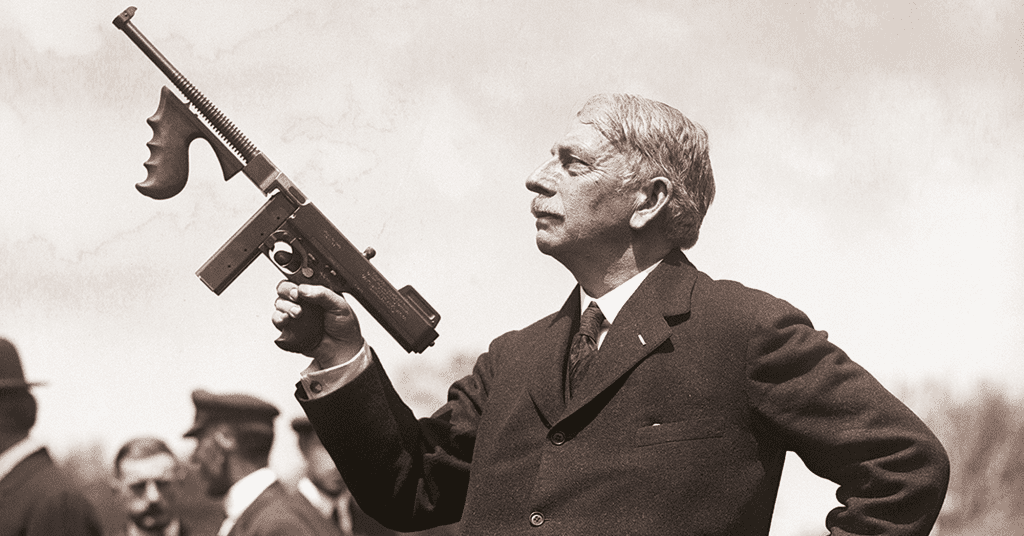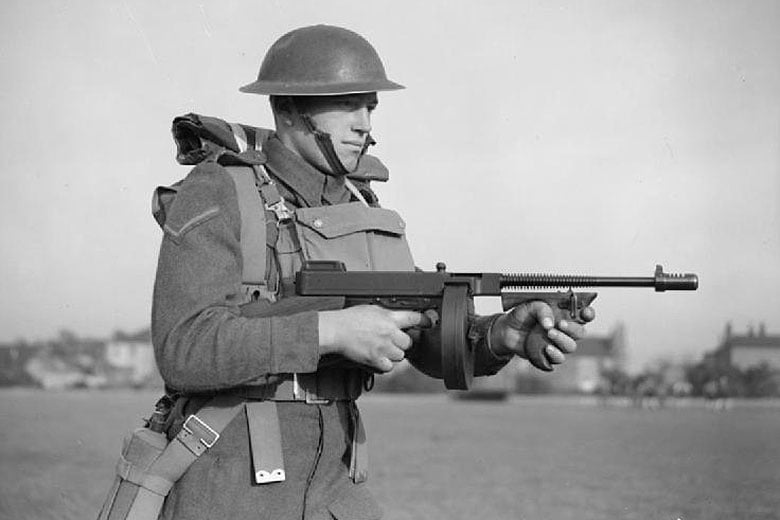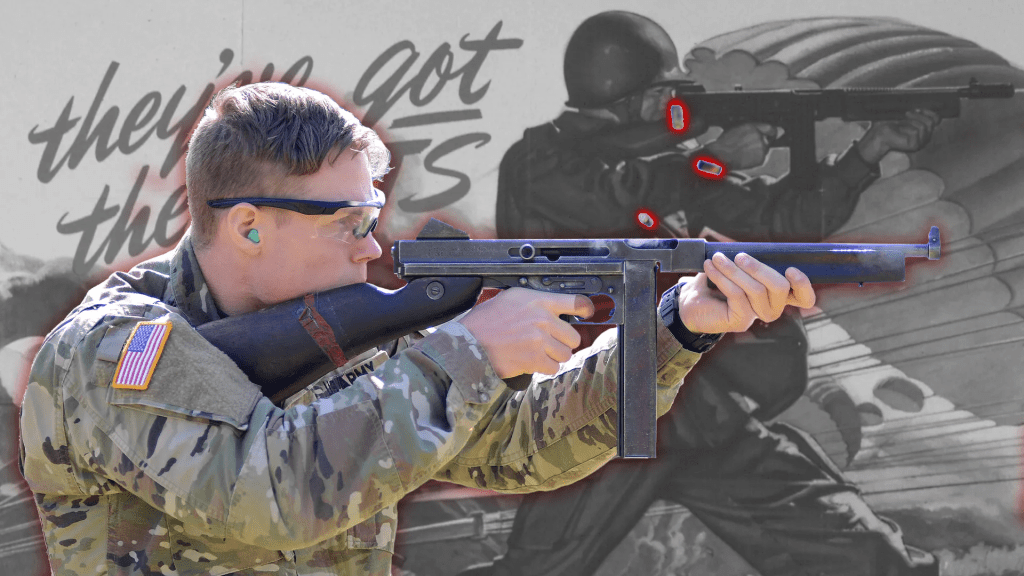Few weapons in history carry a legacy as complex and compelling as the Thompson submachine gun. Known affectionately and fearfully as the “Tommy Gun” or the “Chicago Typewriter,” this firearm has carved its name into two very different chapters of 20th-century history. On one hand, it became the infamous symbol of Prohibition-era gangsters, echoing in the back alleys of Chicago. On the other, it earned the trust and respect of Allied soldiers on the frontlines of World War II.
This dual identity makes the Thompson more than just a gun it’s a cultural icon that evolved from an outlaw’s tool to a liberator’s sidearm.

Birth of a Machine Gun for the Trenches
The Thompson submachine gun was designed by General John T. Thompson in the aftermath of World War I. His original intent was to create a lightweight, automatic weapon for close-quarter combat something that could help break the stalemate of trench warfare.
Although World War I ended before the gun could be deployed in combat, Thompson’s design was ahead of its time. It featured a high rate of fire, fired .45 ACP cartridges (the same used in the Colt 1911 pistol), and was built for reliability in harsh conditions. These traits would eventually make it indispensable on battlefields to come.

The Gangster Era: The Rise of the “Chicago Typewriter”
With peace prevailing in the 1920s and military orders slow to materialize, the Thompson found a new market and not the one its inventor had imagined. During the Prohibition era, the gun’s compact size, fast rate of fire, and devastating stopping power made it the weapon of choice for gangsters, bank robbers, and mobsters.
Video:
M1928/A1 Thompson
Infamous figures like Al Capone and John Dillinger were known to favor the Tommy Gun, and its appearance in mob-related shootouts made headlines across the nation. Its menacing profile and thundering sound turned it into the ultimate symbol of organized crime. Law enforcement, caught off guard by such firepower, often found themselves outgunned until they started carrying Thompsons themselves.
Hollywood, too, played its part. From black-and-white crime dramas to action-packed noir films, the Tommy Gun became a cinematic fixture, reinforcing its legend in American pop culture.
Redemption on the Battlefield: WWII and the Thompson’s Second Life
As the world plunged into the chaos of World War II, the Thompson finally found its true purpose. Issued to U.S. troops and Allied forces, it became a frontline favorite. Soldiers appreciated its close-range effectiveness, especially in jungle warfare, urban combat, and trench clearing operations.
General George S. Patton famously called it “the greatest battle implement ever devised.” The gun was particularly beloved by paratroopers, commandos, and officers who valued its rapid firepower and compact frame in tight situations.
Though heavier and more expensive to manufacture than many of its peers, the Thompson stood out for its durability and intimidation factor. German and Japanese troops came to recognize and fear the distinctive sound of its automatic fire.

The Design That Endured
The Thompson’s signature features including the top-mounted charging handle, pistol grip, and optional drum magazine made it both functional and iconic. While the early models featured a 50- or 100-round drum magazine, wartime versions often used 20- or 30-round box magazines for greater practicality and weight savings.
Video:
Tommy Gun Gone Wrong – How We Invented Guns
Despite its bulk, the Tommy Gun’s rugged design allowed it to perform in muddy trenches, humid jungles, and war-torn cities. Whether firing in full-auto bursts or carefully aimed semi-automatic shots, it proved itself again and again.
Post-War Legacy and Cultural Symbol
After World War II, the Thompson gradually faded from military use. It was phased out in favor of lighter, more cost-effective submachine guns. But its cultural impact remained strong.
In civilian life, the Thompson became a prized collector’s item. It appeared in countless films and documentaries, often representing the grit and intensity of a bygone era. Museums worldwide display the gun as both a relic of organized crime and a symbol of Allied resistance.
Even today, the Thompson submachine gun continues to spark fascination. Firearm enthusiasts, historians, and filmmakers alike recognize it as more than a tool it’s a story in steel and wood, one that spans bootleggers and battlefields.

Conclusion: A Weapon That Wrote History
The Thompson submachine gun’s journey from gangster hands to soldiers’ grips is one of transformation. In one era, it struck fear as a weapon of lawlessness. In another, it brought hope and firepower to the forces of freedom. From the smoky alleys of 1920s Chicago to the bloodied fields of Normandy and Iwo Jima, the Tommy Gun earned its place in history.
Its story isn’t just about bullets and blueprints it’s about the way tools of destruction can be shaped by the times, the people who wield them, and the causes they serve. In the case of the Thompson, redemption came not through reinvention, but through purpose. It was built for battle and in the end, it helped win a war.



